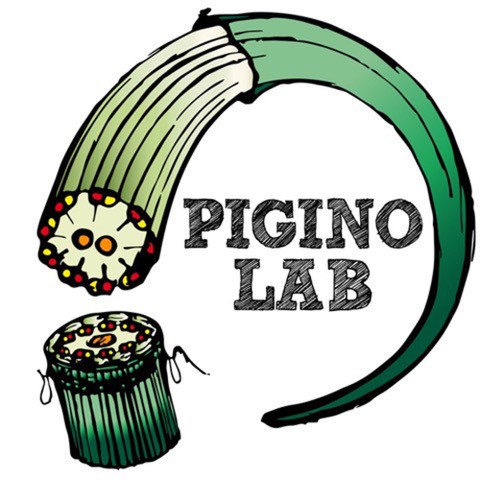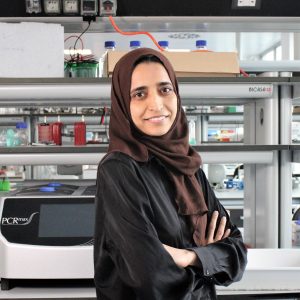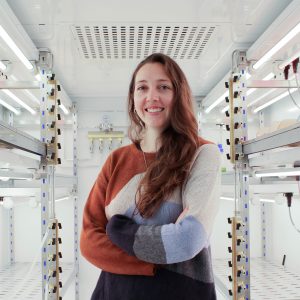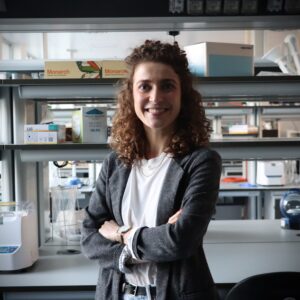
Pigino Group
Le ciglia sono organelli simili a capelli che si estendono dalla superficie di quasi tutti i tipi di cellule polarizzate del corpo umano. Sono cruciali per varie funzioni motili e sensoriali durante lo sviluppo, la morfogenesi e l’omeostasi. Le ciglia sensoriali agiscono come antenne cellulari, rilevando segnali ambientali e morfogenici. Le ciglia mobili, invece, vengono utilizzate per spingere le cellule stesse o per spostare i fluidi sugli epiteli (ad esempio nei nostri polmoni). I disturbi correlati alle ciglia (noti come ciliopatie) colpiscono molti tessuti e organi in vari modi.
La disfunzione ciliare è la causa di un numero crescente di malattie di un singolo organo e forme sindromiche complesse tra cui idrocefalo, infertilità, malattie delle vie aeree, malattie policistiche del rene, fegato o pancreas, nonché malattie della retina e difetti dell’udito e dell’olfatto.
Il Pigino Group indaga la struttura 3D dei componenti molecolari delle ciglia nel loro contesto cellulare nativo e in isolamento, cercando di capire come orchestrano le funzioni specifiche delle ciglia. Il nostro lavoro si posiziona tipicamente proprio nell’interfaccia tra biologia strutturale e biologia cellulare molecolare. Combiniamo quindi gli strumenti e le metodologie più recenti di entrambi i campi, dalla tomografia crioelettronica, alla microscopia a luce e fluorescenza correlativa (CLEM), ai sistemi dinamici ricostituiti in vitro, alla genetica, alla biochimica, ai metodi di analisi delle immagini, fino alla biologia cellulare più classica.
L’obiettivo finale del Pigino Group è comprendere le cause molecolari alla base della funzione e della disfunzione ciliare, in modo che possano essere sviluppate possibili strategie terapeutiche per le ciliopatie.
Membri del gruppo
-
 Gaia Pigino
Gaia Pigino
Associate Head of Structural Biology Research Centre -
 Gonzalo Alvarez Viar
Gonzalo Alvarez Viar
Postdoc -
 Paola Capasso
Paola Capasso
Senior Technician -
 Rubina Dad
Rubina Dad
Postdoc -
 Helen Elizabeth Foster
Helen Elizabeth Foster
Postdoc -
 Malina Karen Iwanski
Malina Karen Iwanski
Postdoc -
 Nikolai Klena
Nikolai Klena
Postdoc -
 Samuel Edward Lacey
Samuel Edward Lacey
Postdoc -
 Giovanni Maltinti
Giovanni Maltinti
PhD Student -
 Adrian Pascal Nievergelt
Adrian Pascal Nievergelt
Scientific Visitor
Pubblicazioni
-
07/2019 - Methods in Cell Biology
Content-aware image restoration for electron microscopy
Multiple approaches to use deep neural networks for image restoration have recently been proposed. Training such networks requires well registered pairs of high and low-quality images. While this is easily achievable for many imaging modalities, e.g., fluorescence light microscopy, for others it is not. Here we summarize on a number of recent developments in the […]
-
06/2019 - Methods in Cell Biology
Yeast membraneless compartments revealed by correlative light microscopy and electron tomography
Yeast essential enzymes are able to assemble and form membrane-less compartments in the cytoplasm during stress conditions (Narayanaswamy et al., 2009). These microcompartments form rapidly under ATP-depletion upon cellular regulation of pH and molecular crowding (Munder et al., 2016). So far, the behavior of most of these enzymes has been characterized by live imaging using fluorescence […]
-
05/2019 - Methods in Cell Biology
In situ cryo-electron tomography and subtomogram averaging of intraflagellar transport trains
In situ cryo-electron tomography (cryo-ET) and subtomogram averaging are powerful tools, able to provide 3D structures of biological samples at sub-nanometer resolution, while preserving information about cellular context and higher-order assembly. Best results are typically achieved, when applied to highly repetitive structures, such as viruses. Other typical examples are protein complexes that decorate long stretches along ciliary microtubules at […]
-
11/2018 - Nature Cell Biology
The cryo-EM structure of intraflagellar transport trains reveals how dynein is inactivated to ensure unidirectional anterograde movement in cilia
Movement of cargos along microtubules plays key roles in diverse cellular processes, from signalling to mitosis. In cilia, rapid movement of ciliary components along the microtubules to and from the assembly site is essential for the assembly and disassembly of the structure itself1. This bidirectional transport, known as intraflagellar transport (IFT)2, is driven by the […]
-
10/2018 - ArXiv
Cryo-CARE: Content-Aware Image Restoration for Cryo-Transmission Electron Microscopy Data
Multiple approaches to use deep learning for image restoration have recently been proposed. Training such approaches requires well registered pairs of high and low quality images. While this is easily achievable for many imaging modalities, e.g. fluorescence light microscopy, for others it is not. Cryo-transmission electron microscopy (cryo-TEM) could profoundly benefit from improved denoising methods, […]